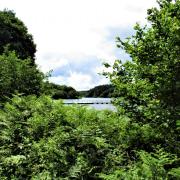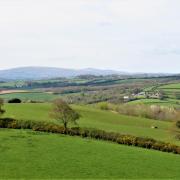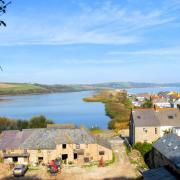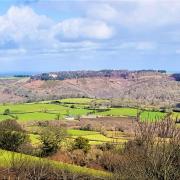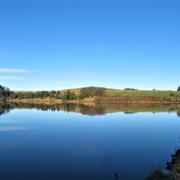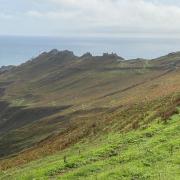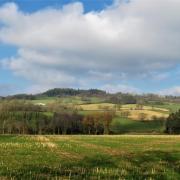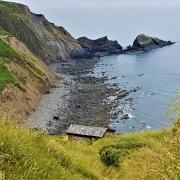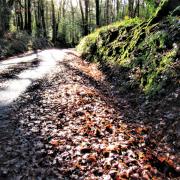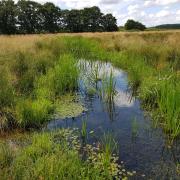At more than 368 square miles, Dartmoor National Park is the largest and wildest area of open country in the south of England, with ancient woodland, high granite tors and vast tracts of rolling moorland.Here are Dartmoor’s best hidden secrets...
1. The grave of Kitty Jay - Hound Tor
A serving girl who died in tragic circumstances - mysteriously flowers are left almost daily on her 18th century burial mound, nobody is ever seen leaving them but no matter what time of year there are always flowers, posies or greenery sat on the lonely mound. Tradition says that the flowers are the work of the piskies who out of sympathy tend the grave throughout eternity. We wish those piskies will come and tend to our gardens.
______________________
2. The beautiful prehistoric remains of the Merrivale Monument - Whitchurch, near Princetown
Dartmoor is rich in prehistoric remains, and the group of monuments at Merrivale is one of the finest on the moor - spectacular at sunset. Side by side here are the remains of a Bronze Age settlement and a complex of ritual sites, including three stone rows, a stone circle, standing stones and a number of cairns - earth mounds associated with burials. The monuments were probably built over a long period, between about 2500 BC and 1000 BC.
______________________
3. The family-run Hill House Plant Nursery and Garden with award-winning tea room- Landscove
Hill House Nursery is run by father and son Raymond & Matthew Hubbard. While the Nursery doesn't specialise & carries a range of over 3000 plants, it has a high reputation for unusual & hard-to-find plants & satisfied customers from all over the world.This often-televised Victorian Gothic vicarage's garden was originally laid out by famous writer & plantsman, Edward Hyams. Much of his planting can still be seen today. Tea room. Gardens are free. 7 days a week.
______________________
4. The fairytale Wistman's Wood, a rare example of an ancient oak wood - Two Bridges
Nestled on the eastern slopes of the West Dart river stands a wood of dwarf oak trees. Once you walk into the tangled web of trees you are transported into a mystical world of moss carpeted boulders, lichens of all descript, finger like oak branches, all engulfed in a wonderful smell of earth and age.
______________________
5. Sharrah Pool on the River Dart for a wild swimming experience - near Holne
Pass Horseshoe Falls, Wellsfoot Island and Bell Pool to arrive at the legendary Sharrah pool. Do the "Sharrah Chute", which involves climbing on to Elephant Rock, and then jumping out into the current and getting swept away in the churning rapids. Just down from the cascade, you zoom through a rectangular channel, with walls of granite, before the pool opens out into a vast oval.
______________________
6. Bellever Forest - Postbridge.
A tranquil moorland spot for riding, biking or hiking around the archaeological monuments - why not try the History Hunters trail, brought to life by the Moor Than Meets the Eye project?
______________________
7. Widecombe church, known as the "cathedral of the moors"- Widecombe-in-the-moor.
The church was built in the 14th century using granite from local quarries. It was extended several times over the following 200 years, reflecting the prosperity of the Dartmoor tin-mining trade. It's famous for its size and its striking 135-foot high tower. It is thought to be the most visited parish church in England.
______________________
8. The American cemetery in the grounds of Dartmoor Prison - Princetown.
A burial ground laid out in 1866-8 to commemorate the American Prisoners of War who died at Dartmoor Prison during the Anglo-American War of 1812-1815.
______________________
9. Buckland Abbey - Buckland Monachorum, near Yelverton.
Once home to Sir Francis Drake, when you visit Buckland, you follow over 700 years of footsteps; from the Cistercians who built the Abbey and farmed the estate, to seafarers Grenville and Drake who changed the shape of the house and the fate of the country.
______________________
10. Award-winning Stone Lane Gardens, home of the annual Mythic Garden Sculpture Exhibition - Chagford.
Stone Lane Gardens was the creation of Kenneth and June Ashburner, the owners of the grade 2 listed Stone farm. In 1995, Pant Heritage awarded the gardens its 'National Collection' status in recognition of the importance of the diversity and rarity of its trees. In 2015 Plant Heritage further awarded the gardens 'Scientific Status' in acknowledgement of the great work Kenneth Ashburner had done to extend and promote knowledge of the species, work that continues today under the stewardship of our Garden Manager, Paul Bartlett. In 2019 Stone Lane Gardens became an RHS Partner Garden.
______________________
Read more: Prettiest streets in Devon: 11 you need to take a walk down






